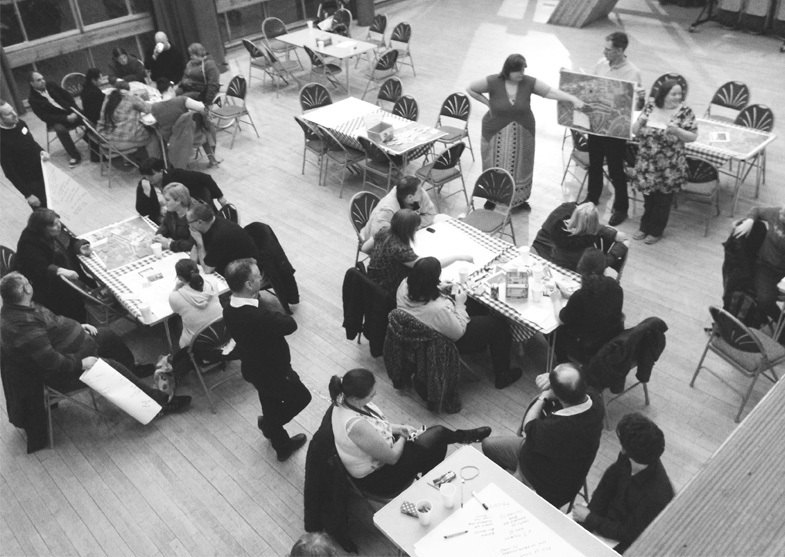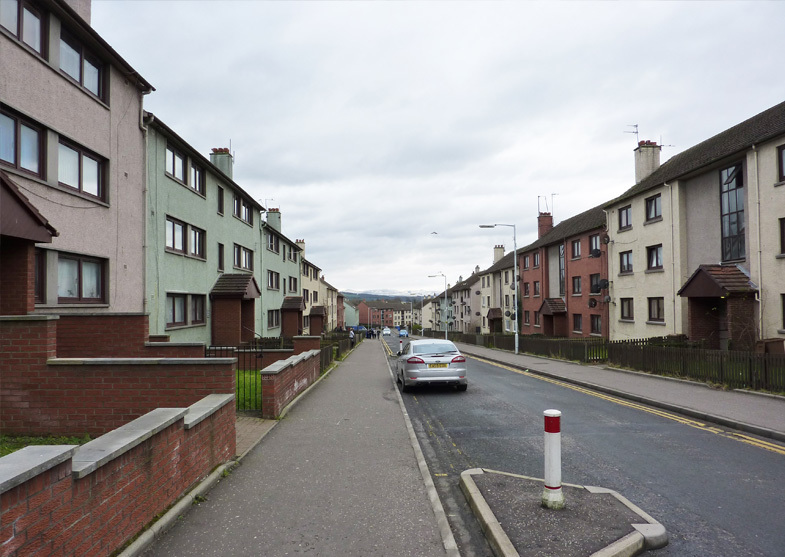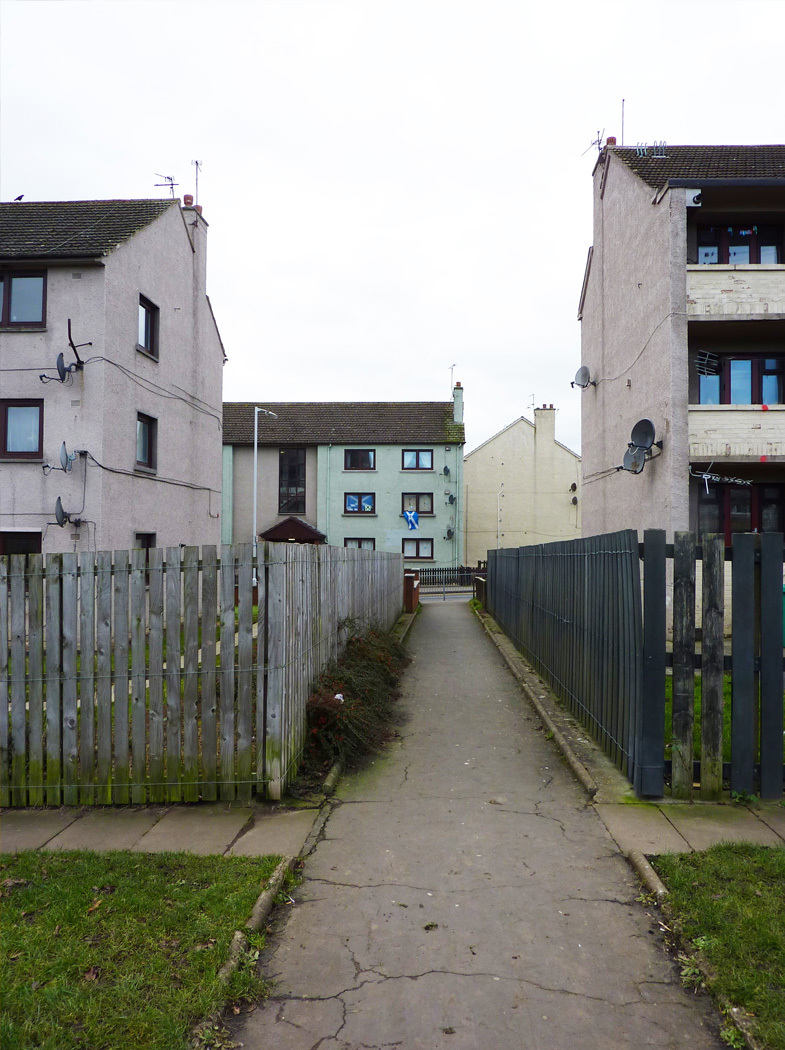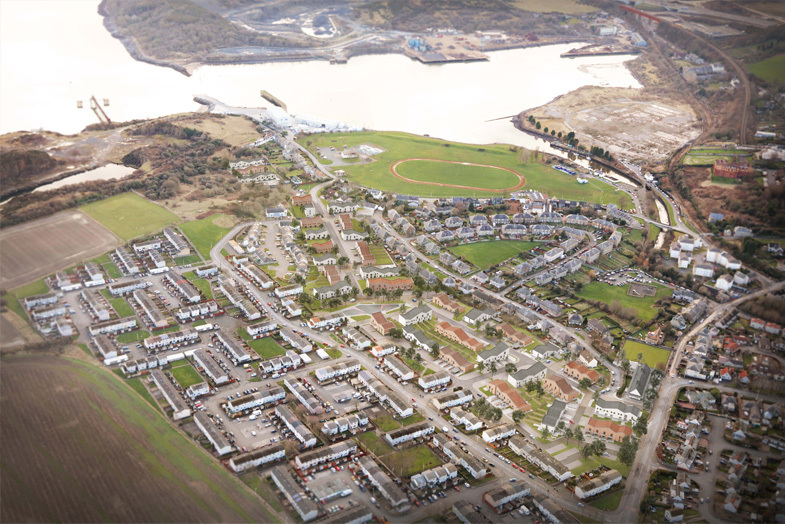
Frances Heslop has been working on the regeneration of the Fraser Avenue estate in Inverkeithing, Fife, where 7N have worked closely with the local community to encourage the existing tenants’ involvement in the design of their new homes and neighbourhood.
A large proportion of post war social housing in Scotland is now in poor condition and in urgent need of renewal or replacement. Hasty post war slum clearance and subsequent decades of mass house building often led to the creation of poorly planned, badly connected estates - the design of which rarely took into account the priorities of residents.
This often led to a sense of social isolation and feeling of abandonment amongst the people that lived there. Over time this fostered a stigma surrounding the very idea of social housing and so tenants often felt disenfranchised.
By involving communities in the inception and design of new and future developments, architects, planners and councils can encourage a feeling of ownership among tenants and fundamentally, ensure that they are meeting the needs of the individuals and families being housed.
Lynsey Hanley writes of her own experience of this more modern approach to community driven regeneration at the east London estate where she lived in her book Estates. An Intimate History, “Needless to say, none of us was in possession of a qualification in town-planning, and yet we had somehow – with an architect’s help – planned our own, albeit small town. Perhaps if this had happened in the 1960s,” … “we would not have this job to do.” 1
Alongside Fife Council, Kingdom Housing Association and Nick Wright Planning, 7N have taken this approach to the redevelopment of Fraser Avenue, Inverkeithing. With the community at Fraser Avenue, 7N carried out a series of workshops, firstly to identify the locals’ priorities and concerns and then to use these insights to facilitate a debate on how best to regenerate the area. These events were well attended by residents who had a wide variety of experiences and contributions to make which were invaluable to the design process.
It was clear that the residents had a desire to eliminate as far as possible the negative associations attached to the existing estate and felt that a radical change to the structure of the area needed to take place. When 7N presented an option for realigning Fraser Avenue and breaking down the surrounding housing into shorter terraced streets to transform the estate from canyon-like wind tunnel to comfortable garden village, this was by far the resident’s preferred option. We also established, among other things, that it was important to the residents that they have their own front doors and private garden areas after years of living in flats with poorly defined public and private space, and that the replacement housing should be able to cater for the varied needs of a community that is diverse in age, family size and mobility.
The involvement of the returning residents has been encouraged at other scales too. The RSL responsible for the construction and management of the project, Kingdom Housing Association, have in place a thorough tenants’ choice programme which enables prospective tenants to choose everything from their preferred internal layout to kitchen and bathroom fittings and the colour of their own front door. This process has ensured that the forms of the buildings and organisation of the elevations have a more organic feel, guided by the preferences of the individuals occupying them. This represents a considerable step away from the uniform, impersonal facades of the existing flats.
The residents of Fraser Avenue will also be involved in the design of the public realm, focusing on the park area that forms the heart of the site, in further workshops with the community and local schools. This will give them the opportunity to literally leave their stamp on the area by inputting into the public art and landscape design proposals.
The Scottish Government has committed to building 50,000 new affordable homes by 2021, with 35,000 of these being for social rent. Involving residents in this process is vital in developing sustainable communities that remain viable and successful throughout their life span. This involvement also helps to prevent lengthy planning processes, leading to missed deadlines, where locals repeatedly reject unpopular proposals, and assists in eliminating the sense of apathy that can build up in communities that feel they are being overlooked. Community engagement can help us to create distinctive, tailored neighbourhoods that further encourage the sense of place and individuality that is so important to people but has often been disregarded in the design of social housing in the past.
The first phase of the Fraser Avenue masterplan is currently under construction with the first of the returning residents due to move into their new homes in the summer. Phase 2 of the redevelopment will follow on in 2019 and the overall masterplan will ultimately provide 189 new homes. We are looking forward to seeing the renewal of the existing community in this transformed setting and hope that the residents will feel a restored sense of ownership over their homes.
1 - Hanley. L (2007), Estates. An Intimate History. P. 205




